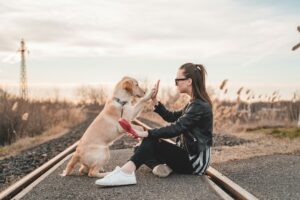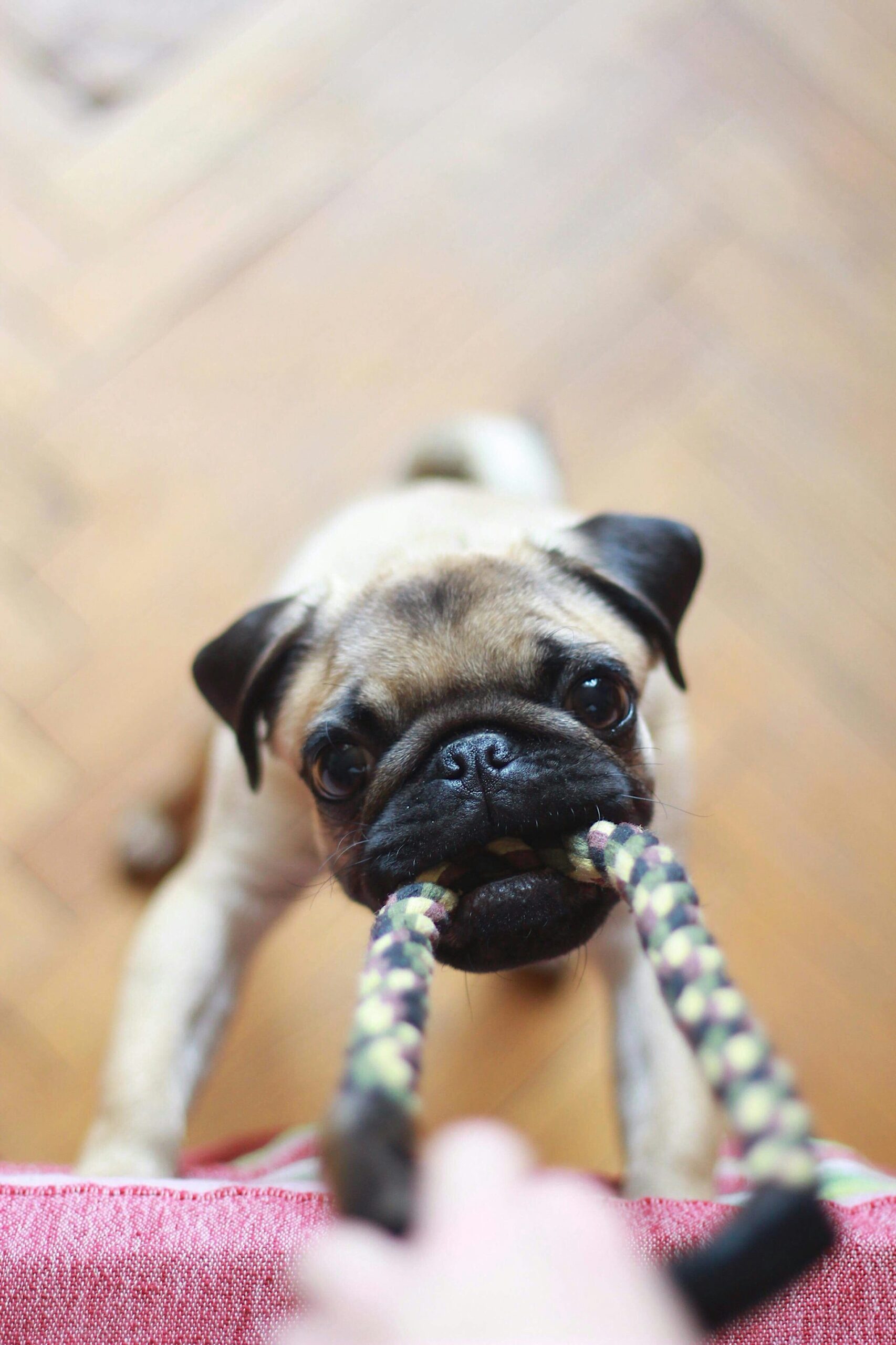Table of Contents
ToggleIntroduction
If you find yourself saying, “I hate my boyfriend’s dog,” it’s essential to recognize that these feelings are valid but can be worked through.
Love can be complicated, especially when it involves not just your partner but also their four-legged companion.
This article will guide you through understanding your emotions, building a positive relationship with the dog, and ultimately restoring harmony in your relationship with both your partner and their furry friend.
Understanding Your Feelings
Before addressing the situation, it’s crucial to delve into your emotions. Ask yourself why you harbor negative feelings towards your boyfriend’s dog. Is it a specific behavior, an allergy, or perhaps a misunderstanding?
Understanding the root cause is the first step toward finding a solution.
Negative emotions can stem from various sources:
**1. Misunderstanding:
Perhaps the dog’s behavior is misunderstood, and what seems like aggression might be excitement or a cry for attention.
**2. Allergies:
Allergies to pet dander can trigger discomfort, making it challenging to form a positive connection with the dog.
**3. Past Trauma:
Previous negative experiences with dogs might contribute to an overall aversion.
I Hate My Boyfriend’s Dog, Now What to do
Healthy relationships thrive on open communication. Share your feelings with your boyfriend, but approach the conversation with empathy.

Expressing your concerns can lead to a better understanding between both of you. Remember, it’s a conversation, not a blame game.
Communicate your feelings by:
**1. Choosing the Right Time:
Pick a moment when both of you are relaxed and not in the midst of other activities.
**2. Using “I” Statements:
Express your feelings using “I” statements to avoid sounding accusatory. For example, “I feel uncomfortable around the dog because…”
**3. Offering Solutions:
Rather than dwelling solely on the negative emotions, propose solutions or compromises that could make the situation more manageable for both of you.
Related Posts :
Let’s Understand How To Keep Cats Away From Peace Lily? 10 Facts
Let’s Understand Top 15: Cat Sleeping Above My Head Meaning Spiritual
Let’s Understand Do Cats Get Horny? TOP 10 FACTS
Let’s understand Is Pura Safe for Cats?
Finding Common Ground
Once you’ve communicated your feelings, work together to find common ground. Identify activities or routines that involve the dog where you can participate comfortably.

This could be walks, playtime, or even training sessions. Finding shared experiences creates positive associations.
Finding common ground involves:
**1. Compromise:
Work together to find compromises that respect both your feelings and the well-being of the dog. It might involve adjusting routines or implementing specific training.
**2. Exploring New Activities:
Discover activities that you and the dog can enjoy together. This could be a new game, a different walking route, or a shared playtime.
**3. Joint Training Sessions:
Participate in training sessions with the dog. This not only reinforces positive behavior but also establishes you as a figure of authority and care. It’s an excellent way to bond and build trust.
Seeking Professional Advice
If the dislike persists, consider seeking advice from a professional dog trainer or behaviorist. They can offer insights into the dog’s behavior and provide guidance on how to foster a positive relationship. Involving an expert demonstrates your commitment to finding a solution.
**1. Vet Consultation:
If allergies are a significant concern, consult a vet to explore potential solutions or medications that can alleviate symptoms.
**2. Behaviorist Assistance:
A dog behaviorist can provide tailored strategies to address specific behaviors that contribute to your discomfort.
Building a Connection with the Dog
Instead of focusing solely on the negative aspects, invest time and effort in building a connection with your boyfriend’s dog. Here are some steps to help you get started:

**1. Spend Quality Time Together
Allocate dedicated time for activities that involve the dog. Whether it’s a game of fetch, a walk in the park, or simply cuddling on the couch, positive interactions create a foundation for a better relationship.
**2. Participate in Training Sessions
Engage in training sessions with the dog. This not only reinforces positive behavior but also establishes you as a figure of authority and care. It’s an excellent way to bond and build trust.
**3. Offer Treats and Affection
Dogs respond well to positive reinforcement. Offering treats and affection when the dog displays desirable behavior creates positive associations. Over time, the dog will associate you with positive experiences.
**4. Create a Safe Space
Designate a comfortable space where the dog can retreat if they feel overwhelmed. Respecting their boundaries helps build trust and ensures a positive environment for everyone.
**5. Involve Your Boyfriend
Encourage your boyfriend to participate in the process. Having his support is essential for creating a united front in fostering a positive relationship between you and the dog.
Patience and Consistency
Building a positive relationship with your boyfriend’s dog takes time, patience, and consistency. Understand that changes won’t happen overnight, and it’s essential to remain committed to the process.
Conclusion
“I hate my boyfriend’s dog” doesn’t have to be a permanent sentiment. By understanding your feelings, communicating openly with your partner, and actively working towards building a positive relationship with the dog, you can restore harmony in your relationship.

Remember, patience, consistency, and a genuine effort to connect with the dog can lead to a more fulfilling and harmonious bond between all parties involved.
In the end, it’s not just about coexisting but about finding joy in the shared moments with your boyfriend and his furry friend.
Related Posts :
Let’s Understand How To Keep Cats Away From Peace Lily? 10 Facts
Let’s Understand Top 15: Cat Sleeping Above My Head Meaning Spiritual
Let’s Understand Do Cats Get Horny? TOP 10 FACTS
Let’s understand Is Pura Safe for Cats?
FAQs: Navigating Common Concerns
Q1: What if the dog has behavioral issues? A1: Seeking professional help from a dog trainer or behaviorist can address specific behavioral concerns and provide guidance on positive reinforcement techniques.
Q2: Can involving my boyfriend in the process make a difference? A2: Absolutely. Having your boyfriend’s support is crucial. It reinforces the idea of a unified approach in creating a positive environment for both you and the dog.
Q3: How can I overcome fear or anxiety around the dog? A3: Gradual exposure and positive reinforcement can help overcome fear or anxiety. Start with short interactions and gradually increase the duration as you become more comfortable.
Q4: What if allergies are a significant concern? A4: Consult a vet to explore potential solutions or medications that can alleviate allergy symptoms. They can provide guidance on managing allergies while maintaining a positive relationship with the dog.
Additional FAQs: Navigating Relationships with Pets
Q5: What if the dog has a strong personality or is overly energetic?
A5: Every dog is unique, and personality traits can vary. Engaging in regular exercise, play, and training can help channel excess energy positively. Consult with a dog trainer for personalized advice.
Q6: How can I create a positive association between me and the dog?
A6: Offering treats, engaging in fun activities, and maintaining a calm demeanor during interactions can help create positive associations. Consistency in positive reinforcement is key.
Q7: What if my dislike is due to past trauma with dogs?
A7: If past experiences contribute to your discomfort, consider gradual exposure therapy with the support of your boyfriend and, if needed, seek guidance from a therapist to address any lingering fears.
Q8: Can joint activities with the dog improve our relationship?
A8: Absolutely. Participating in activities together, whether it’s a hike, a simple game, or a training session, fosters bonding and creates positive experiences for both you and the dog.
Q9: Should I try to establish myself as the “alpha” in the relationship with the dog?
A9: The concept of dominance or being the “alpha” has been debunked in modern dog training. Focus on positive reinforcement, building trust, and establishing yourself as a provider of care and comfort.
Q10: How do I address territorial behavior from the dog?
A10: Territorial behavior can be managed through positive reinforcement, consistent training, and establishing clear boundaries. Seeking guidance from a professional trainer can provide tailored solutions.
Q11: Can involving children or other pets impact the relationship with the dog?
A11: Introducing other members of the household gradually and under supervision is essential. Positive interactions and clear boundaries contribute to a harmonious living environment.
Q12: What if the dog exhibits jealousy or possessiveness?
A12: Reinforce positive behavior through training and ensure equal attention distribution. Establishing routines and providing a sense of security can help alleviate jealousy or possessiveness.
Q13: Can a structured routine benefit the dog and improve our relationship?
A13: Dogs thrive on routines. Establishing a structured daily routine, including feeding times, walks, and play sessions, creates predictability and can positively impact the overall atmosphere in the household.
Q14: How do I handle situations where the dog needs medical attention or grooming?
A14: Gradual desensitization, positive reinforcement, and involving your boyfriend can make medical attention and grooming less stressful. Seek professional grooming services if needed.
Q15: Can breeds with specific characteristics contribute to dislike?
A15: Different breeds have distinct characteristics, but individual temperament varies. Researching the specific breed traits and understanding the dog’s unique personality can help bridge gaps and enhance your relationship.
Remember:
These FAQs offer guidance, but if you have specific concerns about your relationship with your boyfriend’s dog, consulting with a professional dog trainer or behaviorist is always a wise choice.

